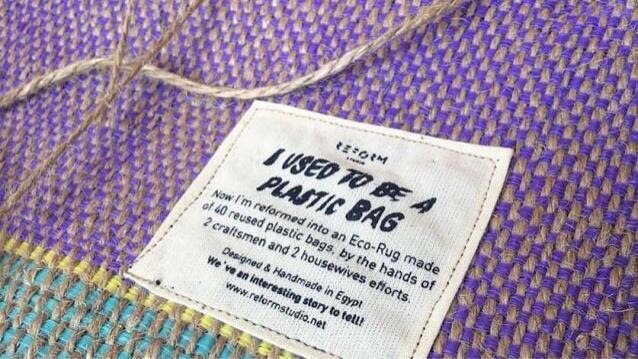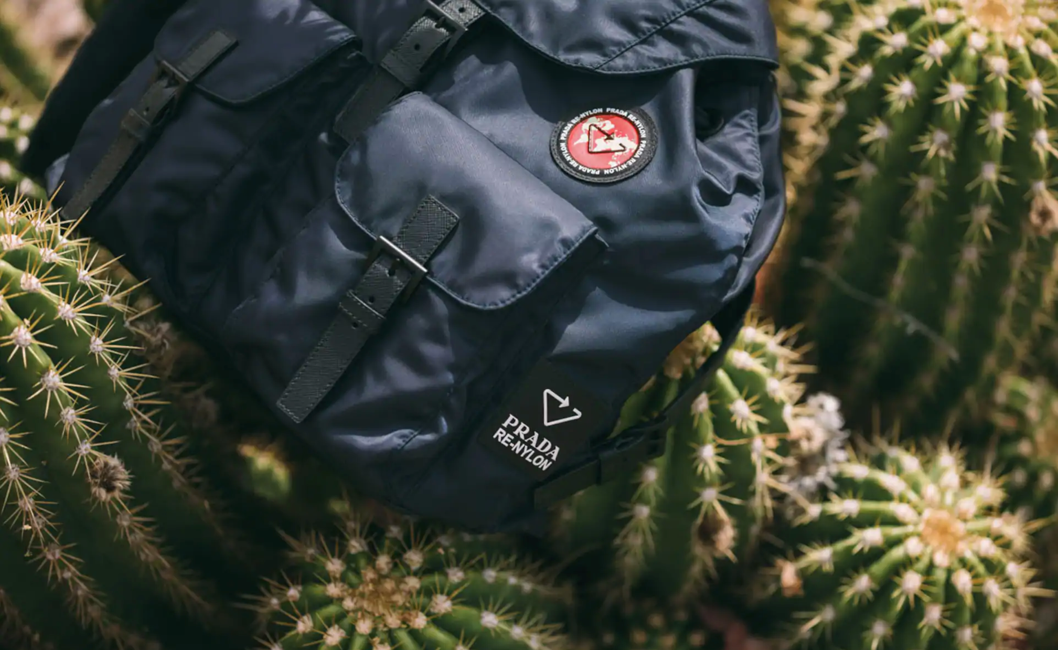How environmental consciousness turns plastic into gold for the business of fashion
A couple of days ago, June 8, was World Oceans Day, a day instituted to remind us of the ongoing efforts to restore and protect our oceans. Plastic is recognized as one of the ocean’s major pollutants, with researches that estimate that by 2050 there will be more plastic than fish in the ocean. As petitions for recycling and circular economy solutions increase, many are finding alternative ways to transform this material from potential waste into a resource for their business.
“As production continues to increase so does the plastic waste dispersed in our environment. Recycling rates are increasing but are still low and almost non-existent in developing countries. Also, half of all plastic produced is designed to be used only once,” said Giorgia Rizzi, Sustainability and Operations specialist, One Ocean Foundation in Milan, Italy — who works to accelerate solutions related to ocean issues through education, research, advocacy, and inspiring action.
Plastic takes on a lot of forms. Disposable plastic bottles, single-use cups, and utensils, bags, food containers, wrapping, packaging, disposable straws, coffee capsule, stirrers are some of the forms we are the most accustomed to seeing. It is released into the water through microfibers, in the form of microbeads in cosmetics, just to name a few. More recently we’ve seen the surge in single-use protective equipment — masks, face shields, valves, and more — needed in the fight against COVID-19. Nonetheless, it is now clear that to effectively implement change, government intervention, the radical transformation of company business models and supply chains are necessary.
It is particularly true in the fashion industry, where reports have provided evidence of how harmful current products and production processes are. The Ellen Mac Arthur Foundation, established ten years ago with the mission of accelerating company’s transition to circular economy, published a report in 2017 which they stated that “It has been estimated that around half a million tons of plastic microfibers shed during the washing of plastic-based textiles such as polyester, nylon, or acrylic end up in the ocean annually.”
This growing consciousness has led to enthusiastic requests for products developed from recycled plastic. Large companies and luxury brands in fashion and design have been experimenting with alternative product lines, prototypical bites of what could be, but fear of failing has led them to proceed slowly before committing to irreversible changes to their business models.
What is leading the supply of recycled solutions has been the innovative approach of smaller businesses, startups, young entrepreneurs, and designers. Emerging businesses have founded and developed their models on concepts of circular economy and reutilizing waste.
“The fashion industry, as it currently operates, is not sustainable (that’s even more true with fast fashion),” said Michelangelo Bovi, part of the Sustainability global practice at Accenture Strategy. According to Bovi, “circular business models present an opportunity to fulfill consumer demands and drive innovation while reducing environmental impact. Circular business models can enable brands to decouple growth from the use of scarce and finite resources.”
aNYbag embodies this transformation. The project was started by Alex Dabagh, son of a leather manufacturer whose factory is located in the middle of the fashion district in Manhattan. The founder built this project around the realization that he could use the skills and hardware he already had in-house to handcraft bags out of recycled materials, such as plastic paper bags collected and other waste scraps. The project garnered media interest by being one of the highlight events at ReFashion week: a New York-based event right after Fashion week, to celebrate sustainable and secondhand fashion.
Photo: Creative board of the aNYbag project in Dabagh’s workshop, Violetta Nespolo
Its recent word-of-mouth success has enabled aNYbag to expand its scope beyond the few initial units, create a commercial brand, and add other members to the manufacturing team.
“We’re teaching all the employees how to work with the plastic,” said Dabagh, “We figured out a way to weave it to size so it’s minimum waste, to reduce waste as much as possible.”
Waste collection is a crucial part of the business as it generates the needed primary resource, together with the cotton trimmings and brand tags, to produce the bags that now sell for $138. For the collection phase, he has had the collaboration of family, friends, local schools, and supermarkets.
“Slowly but surely we want to get all the public-school system involved in this. And pretty much anyone who wants to be a part of this,” said Dabagh.
According to Dabagh what inflates the price of the bags is the craftsmanship and time needed to weave the material.
“The amount of time that goes into this, to make the textile, is where the cost is in,” said Dabagh. “To make the actual bag once you’ve got this is about half-hour per bag.”
Photo: Weaving process in Dabagh’s workshop, Violetta Nespolo
Across the globe, numerous companies have sprouted out of this need for sustainable solutions. Reform Studio is an Egyptian brand that developed from the founders’ realization, as stated on their website, that in their country “plastic bags were the second most used and discarded product.” They’ve succeeded by pioneering a new material: Plastex, created by thinly weaving wasted plastic bags into raw material for their designer accessory collection: from bags to shoes, to furniture pieces.
Source: Rug woven from Plastex by Reform Studio link
Reform Studio’s innovative model won them various prizes, including the 2019 edition of designer Rossana Orlandi’s prestigious Guiltless Plastic competition, which rewards the best plastic recycling projects. It led IKEA to include a selection of their products as part of its offering and has allowed them to set a premium price on their products. Their handcrafted collection items have prices ranging from $450 for a mono-color pouch to $2,800 for a bucket bag, and up to $4,800 for a pouf made by three craftsmen, out of 234 plastic bags.
Source: Reform Studio — Egypt, Collection Ad | Industrie Africa link
Pure Sportwear, a Dutch-based company, collects polyester from bottles and other waste and transforms it into sports garments, using energy-efficient and socially conscious methods that respect workers. Batoko in England manufactures swimsuits from 100% upcycled and recycled plastic, driven to this venture by a personal experience collecting plastic on beaches. They’ve decided to keep their business and product range small and encourage customers to buy in a parsimonious way. US-based Nothing New crafts quality, Converse-style shoes from 100% recycled plastic, cotton, and rubber from both consumer and industrial waste.
Other businesses instead have focused on B2B models, creating the material, thread, or fiber derived from recycled waste, for other companies who then transform it into finished products. Econyl is a great example, as it regenerates nylon and sells its processed product to brands such as Tommy Hilfiger, Prada, and Adidas, inspiring them to start their own lines.
Source: Prada Re-Nylon Collection, created by converting Prada virgin nylon into ECONYL link
NewLife is an Italian company that produces a trademarked yarn from recycled polyesters, derived from sourced post-consumer bottles. Bionic Yarn, based in New York, USA, strives to reduce ocean pollution by recycling coastal and marine plastic to produce its three different types of patented yarns. These are used by brands like Chanel, Polo Ralph Lauren, Moncler, and H&M. REPREVE, from North Carolina in the USA, manufactures fibers by recycling plastic bottles, conscious of their water and energy consumption in the process. Patagonia, TOMS, and Quicksilver use Repreve’s filament.
Nevertheless, while the scale and number of companies taking action increases, it is clear that their efforts aren’t enough if not incentivized by policymakers and regulations.
“Unfortunately, the scale of this progress is not yet sufficient to offset consumption growth and reduce the environmental impact, so a combined effort of institutions, business, and NGOs are vital to succeed,” said Bovi.
Collaboration between institutions, private entities, and consumers is ever so necessary for innovation to succeed in developing environmentally conscious, sustainable, and cost-effective solutions.
As Rizzi from One Ocean Foundation stated, “It is time to take action, scale-up, and favor the industrialization of innovative solutions to combat and prevent this problem, stimulating the adoption of circular economy business models.”




